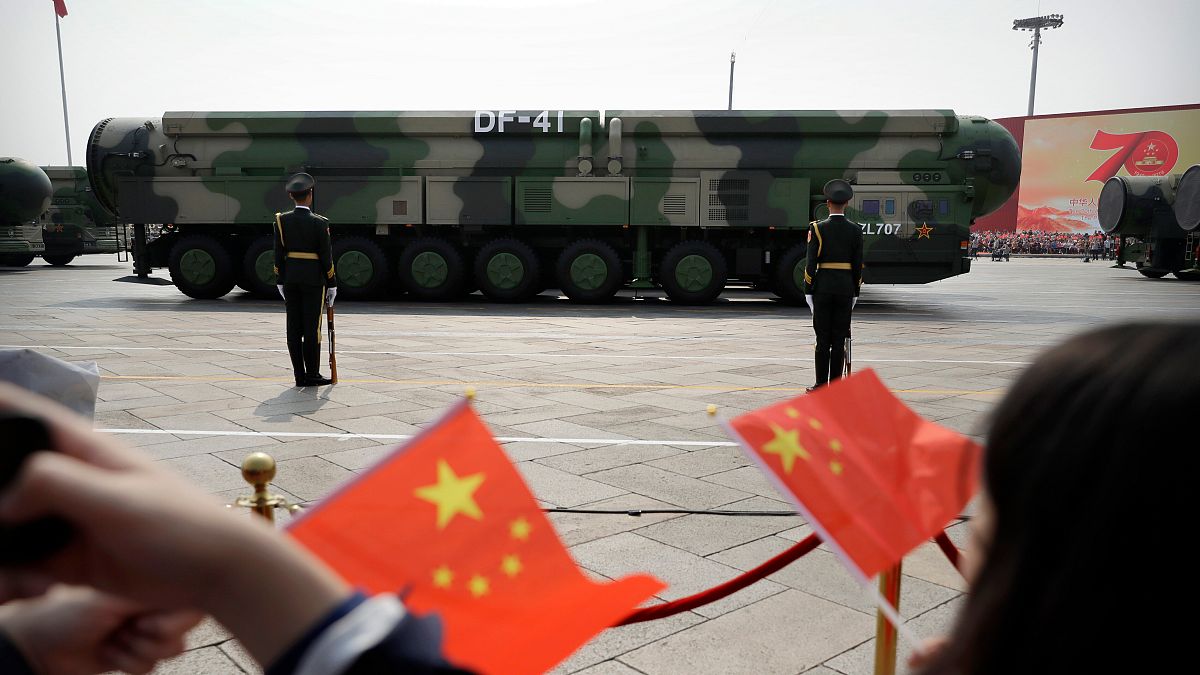Beijing’s rapid expansion of its missile capability in recent years represents a direct challenge to the US security guarantees that much of East Asia depends upon.
China test-fired an intercontinental ballistic missile into the Pacific Ocean on Wednesday, stirring security concerns in a region already tense over Beijing’s territorial claims and rivalry with the US.
The missile carried a dummy warhead and fell into a designated area of the sea, the Defence Ministry said in a statement posted to social media.
The ministry insisted that the launch by the People’s Liberation Army’s Rocket Force was part of routine annual training, complied with international law and was not directed against any country or target.
A map published in Chinese newspapers at the time showed the target area as roughly a circle in the centre of a ring formed by the Solomon Islands, Nauru, the Gilbert Islands, Tuvalu, western Samoa, Fiji and the New Hebrides.
The US and non-governmental organisations have previously said China is building up its array of missile silos, but it’s unclear how many missiles and nuclear warheads it has actually added to its arsenal.
The US remains China’s main global rival, although Japan, Taiwan, the Philippines and others have territorial disputes with Beijing that occasionally threaten to develop into military clashes.
Despite its desire to achieve regional military hegemony, China maintains a “no first use” nuclear weapons policy, and tests of China’s intercontinental ballistic missiles in international waters are rare.
Experts and a historical survey of China’s program by the Washington-based Nuclear Threat Initiative suggest the last occurred in May 1980. That test saw China launch its DF-5 missile into the South Pacific.
According to James Acton, the co-director of the Nuclear Policy Program and a senior fellow at the Carnegie Endowment for International Peace, China typically launches missiles toward its western deserts from its east coast. The fact that China launched a test that splashed down in international waters was unusual, he said, but mirrors testing that the US does for its own ballistic missile fleet.
“When they haven’t done something for 44 years and then they do it, that’s significant,” Acton told The Associated Press. “It’s China’s way of telling us, ‘Like you, we’re not ashamed we have nuclear weapons and we’re going to behave like a great nuclear power’.”
Offensive and defensive
A series of corruption arrests in China this year ensnared several leading officers in the Rocket Force, and two previous defence ministers have been detained over allegations of misconduct.
A test launch now could both provide assurances to China’s population, who are facing an economic downtown, and a signal to the world that the Chinese Communist Party remains firmly in control and is determined to rise to global prominence.
Meanwhile, tensions remain high over Taiwan and with the Philippines, where the US Army has deployed its new mid-range missile system, known as Typhon.
On Wednesday, two Filipino officials said the US and the Philippines have agreed to keep the system there indefinitely to deter China.
“I don’t know what’s the plan, but if I were to be followed, if I were given the choice, I would like to have the Typhon here in the Philippines forever because we need it for our defence,” said General Romeo Brawner Jr, the head of the Philippines’ military.
Defence officials in Japan and Taiwan declined to comment directly on the Chinese announcement. Both, along with South Korea, maintain robust defences against Chinese moves, including early warning systems and air raid shelters.
Checkout latest world news below links :
World News || Latest News || U.S. News
The post China test-fires intercontinental ballistic missile into Pacific Ocean appeared first on WorldNewsEra.

